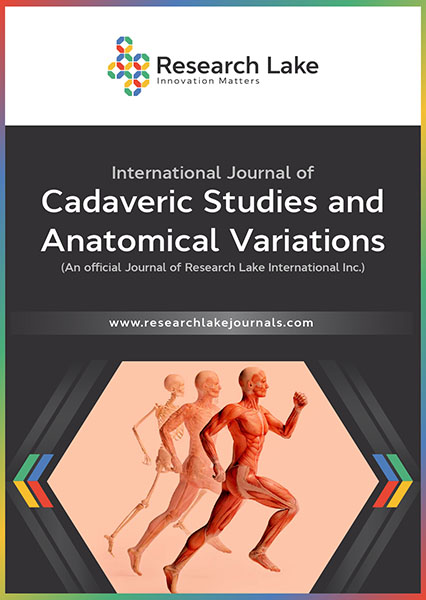Dermatopathological Analysis of Common Skin Lesions Encountered in Cadavers
Abstract
This study served as a purpose for medical students to gain experience in both dermatology and pathology, which is a common barrier that prevents first and second year medical students from refining skills that are not later taught until residency. This prompted a study to develop gross differential diagnostic skills and how to analyze histopathology slides to diagnose common skin lesions to refine skills in both clinical and histology presentation.
A cadaveric case series was designed to examine multiple shave biopsies on all abnormal skin lesions observed from nine cadavers used for the first year medical students gross anatomy lab during the year 2022-2023. Biopsies were stained using hematoxylin and eosin. Histopathology slides, though initially viewed by medical students, were confirmed by a pathologist at a later time.
25 samples were taken from the 9 cadavers. The most commonly encountered lesion was macular seborrheic keratosis, with nine of the 25 (32%). Seven of the sample lesions (26.9%) were melanocytic nevus. Two sample lesions (8.0%) from the same cadaver were a superficial cutaneous cyst and one sample lesion (3.8%) from a separate cadaver indicated verruca vulgaris.
Common dermatological lesions were identified among the nine cadavers used for analysis. This provided opportunities to develop and refine skills in dermatopathology. A further increase in sample size is needed to gain exposure to a larger variety of lesions and to identify common dermatological lesions grossly based on differing race, age, and gender.
Copyright (c) 2024 Brigitte Cochran, Tamryn Van Der Horn, Savita Arya, Shiv Dhiman

This work is licensed under a Creative Commons Attribution-NonCommercial 4.0 International License.
Copyright © by the authors; licensee Research Lake International Inc., Canada. This article is an open access article distributed under the terms and conditions of the Creative Commons Attribution Non-Commercial License (CC BY-NC) (http://creativecommons.org/licenses/by-nc/4.0/).















